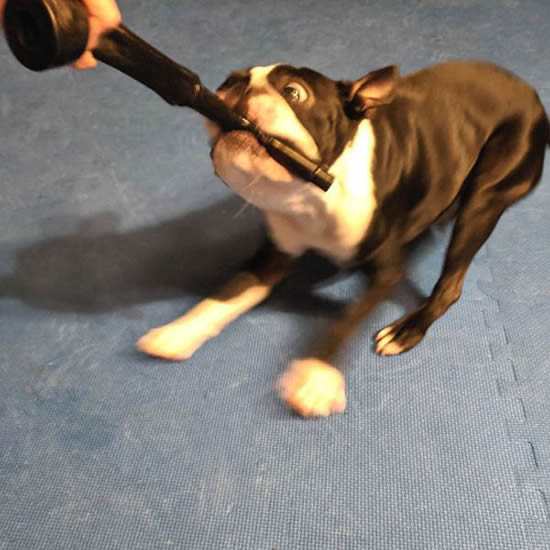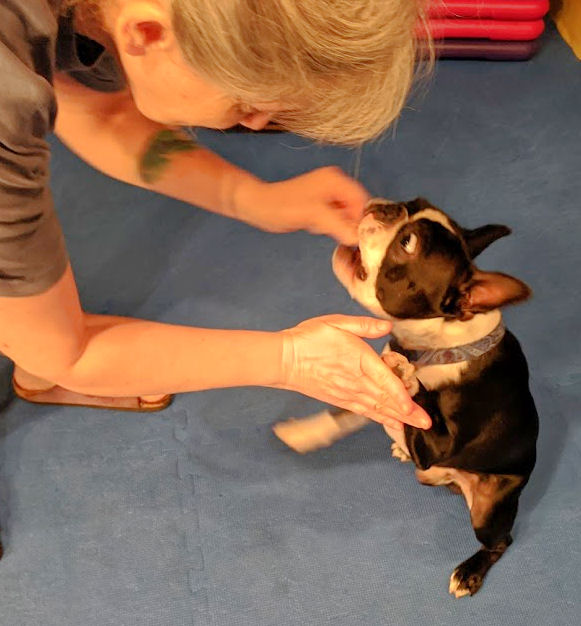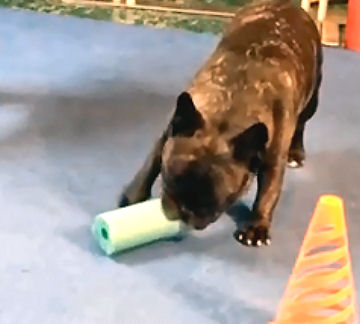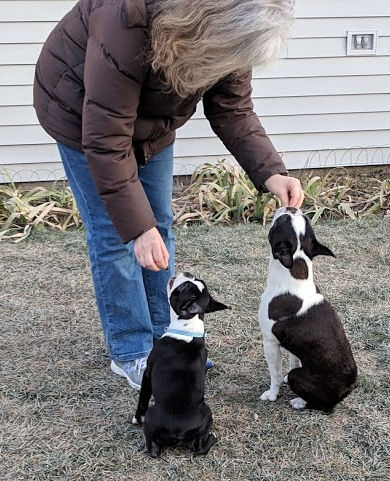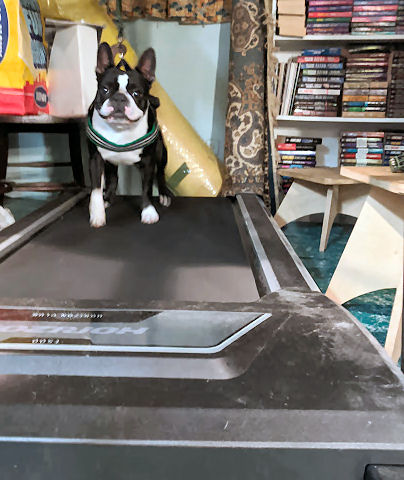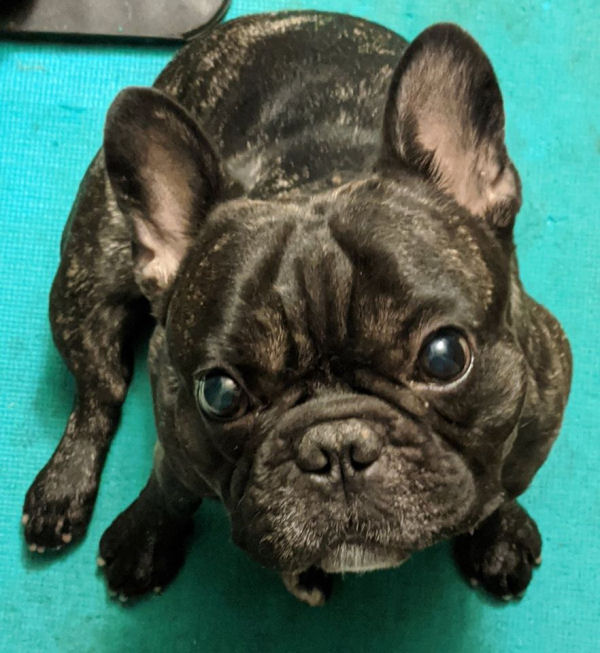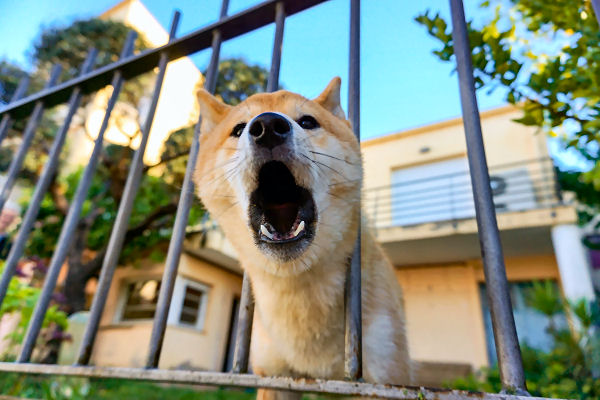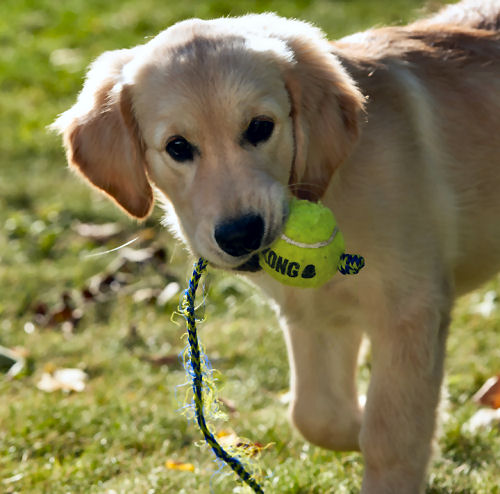Why on earth are we talking about dog muzzle training?
You’d never use a muzzle on your dog, right? Your dog is a sweetheart and would never threaten anyone!
Not so fast. How about if your dog is in an accident and injured? Will you guarantee they won’t snap in panic, pain, or fear? Under duress, the mildest-mannered dog may react according to instinct, not training. Every dog needs a muzzle.
One of the first lessons in canine First Aid is how to fashion a muzzle from any strip of cloth or rope. Emergency personnel want to help your dog, but don’t want to risk their own safety to do it. And we don’t blame them.
Imperatives for safety
There are two things every dog should be trained for “just in case:”
- Crates. Every dog should be familiar and comfortable with a cage or crate. For travel, grooming, hospitalization – it’s the safest place for your dog. In the event of some kind of disaster requiring an evacuation, some shelters will only accept dogs if they’re crated.
- Muzzles. While there are many people who would want to help if your dog were injured, nobody wants to risk a bite. If your dog is at all reactive, a muzzle allows you to go anywhere knowing that nothing will happen. (You can read Fran’s introduction to muzzles with Tango and his reactive training in her book Tango: Transforming My Hellhound.) And many veterinarians now routinely muzzle unfamiliar dogs. It keeps everyone safe. Additionally, a muzzle will prevent your dog from putting everything in his mouth on walks.
Better to have it
There’s an old saying “better to have and not need, than need and not have.” Having a muzzle and never needing it is ideal. Needing one and stressing out your dog isn’t good at all. Every dog needs a muzzle – just in case…
There are lots of different types of muzzles out there. There are muzzles with metal “baskets,” leather muzzles, rubber muzzles, muzzles made of net like Simon’s (below). There’s even a muzzle that looks like a duck’s bill, which makes it less threatening-looking. Which kind you get depends on your preference, your dog’s anatomy, and what’s available. You’ll find all of them online – read the measuring and fitting instructions carefully.
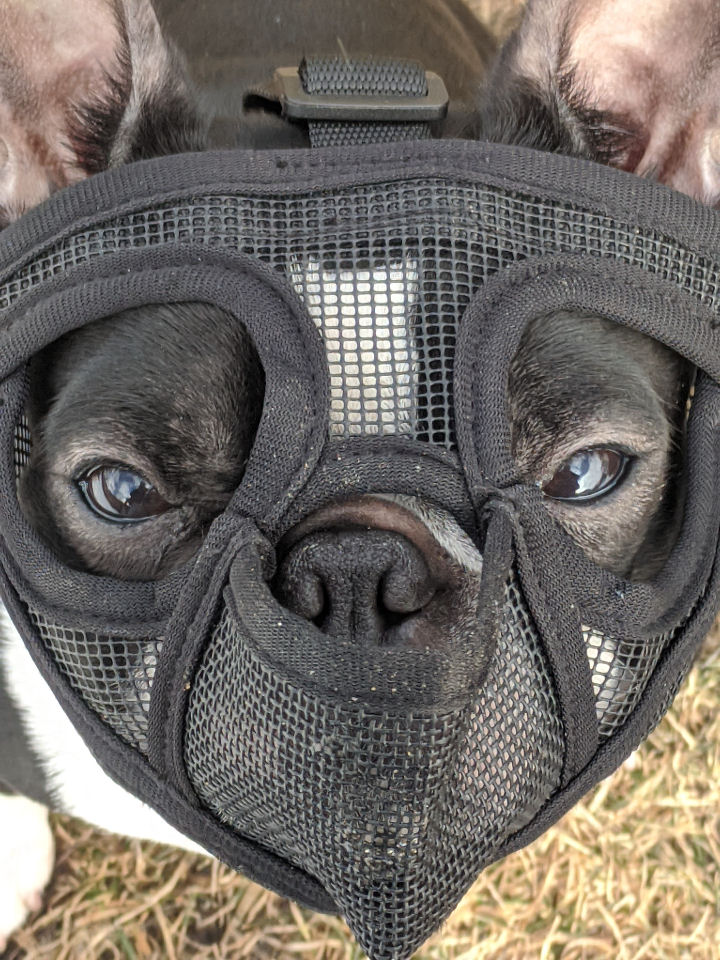
If you have a short-faced dog, your options are more limited, but they do exist. Search specifically for a muzzle for brachycephalic dogs, or short-faced dogs. You can see Simon wearing his muzzle to the left.
Your dog’s muzzle should allow you to deliver treats to your dog. It will also allow the dog to drink, pant, and see clearly. Its purpose is to keep everyone safe, not cause further anxiety in a traumatic situation. Simon can obviously see, breathe, get treats, drink and pant while he wears his muzzle. Even though he has no nose to speak of, Simon has a muzzle that works for him.
Muzzle training steps
The first step for introducing anything new to your dog is exactly that – an introduction. Show the muzzle to your dog, click and reward. If your dog sniffs it, click and reward. If your dog stays calm when you pick it up, click and reward.
Drape the muzzle over the hand that’s delivering treats to your dog. If your dog has to touch the muzzle to get the treat, that’s ideal. But don’t force it. If your dog is wary of the it at first, respect that for now. We want your dog to associate that muzzle with getting lots of high-value treats. Gradually move the muzzle closer to your dog so he has to push into it to get the treat.
Step by step, gradually introduce your dog to the look and feel of the muzzle. If your dog resists, back up to the last step where he/she was okay, and start again. There’s no rush. Your dog will let you know when he/she is okay with the next step. Pay attention to your dog’s signals.
Keep sessions short
Generally speaking, dogs think muzzles are weird. They’re right. Don’t work on muzzle training more than 2-Minutes, like any other training session. But try to devote one 2-Minute session every day to the muzzle, until your dog is completely okay with it. Getting it over his/her head and clasping the buckle may take some time. Take the time that’s needed so your dog doesn’t mind the muzzle at all. Putting on a muzzle should become one of the strange things Mom (or Dad) wants, so your dog does it willingly. They may never like it, but they do it because we ask them to.
And while your dog is wearing his muzzle, don’t be stingy with the treats! If he’s being good, reward him!
If your dog is familiar with wearing a muzzle, you’ll have one less thing to worry about should the unthinkable happen. It’s another way to protect your pet.

